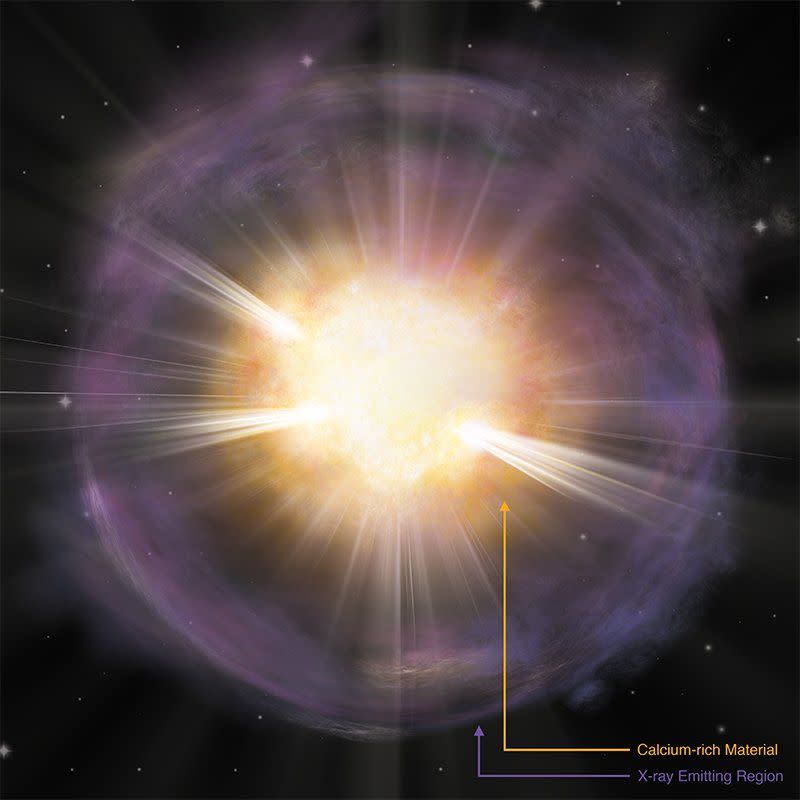The Calcium in Your Teeth Comes from Exploding Stars

Almost half of the calcium in the universe originates from supernova explosions.
Using a slew of Earth-bound telescopes, researchers watched the calcium-producing supernova SN 2019ehk.
SN 2019ehk yielded the most Calcium ever observed during a single event.
Carl Sagan once said we're made of "star stuff." Turns out he was right.
For thousands of years, scientists and natural historians have pondered the origin of the universe's many elements. Now, researchers have unraveled the origin of calcium, the element responsible for our rickety bones and chattering teeth. A new study says half of the calcium in the universe likely came from exploding stars.
🌌 Space is ridiculous. Let's nerd out over it together.
In the study, published in The Astrophysical Journal, researchers from 15 different countries worked together to study a single supernova, SN 2019ehk. Last year, amateur astronomer Joel Shepherd spotted the calcium-rich supernova roughly 55 million light-years away in the star-forming galaxy Messier 100, rattling the astronomical community. Just 10 hours after Shepherd's discovery, telescopes around the world trained their lenses on the cosmic explosion.
"These events are so few in number that we have never known what produced calcium-rich supernovae," astrophysicist Wynn Jacobson-Galan, of Northwestern University, said in a statement. "By observing what this star did in its final month before it reached its critical, tumultuous end, we peered into a place previously unexplored, opening new avenues of study within transient science."
Observations taken by the world's most powerful telescopes revealed that SN 2019ehk was bursting with X-ray light. The high-energy X-rays that came flooding out of the dying star began reacting with the surrounding gases, creating a series of nuclear explosions. It was within this high-pressure and high-temperature environment that the calcium formed.

"Most massive stars create small amounts of calcium during their lifetimes, but events like SN 2019ehk appear to be responsible for producing vast quantities of calcium and in the process of exploding disperse it through interstellar space within galaxies," astronomer Régis Cartier, of the National Optical-Infrared Astronomy Research Laboratory (NOIRLab) in Tucson, Arizona, said in the statement. "Ultimately this calcium makes its way into forming planetary systems, and into our bodies in the case of our Earth!"
SN 2019ehk produced more calcium than any other supernova explosion previously observed, the researchers report. Of course, calcium isn't the only element to form during a supernova.
Twenty-six of the 116 elements on the periodic table are manmade. The rest form from different phenomena across the cosmos. Nickel, xenon, and cobalt also come from these supernovae. Lithium, beryllium, and boron originate from cosmic rays that shoot across the universe. Others form in the heart of growing stars. And scientists believe the two lightest elements, helium and hydrogen, formed during the Big Bang.
Now that's something to chew on.
You Might Also Like

 Yahoo News
Yahoo News 